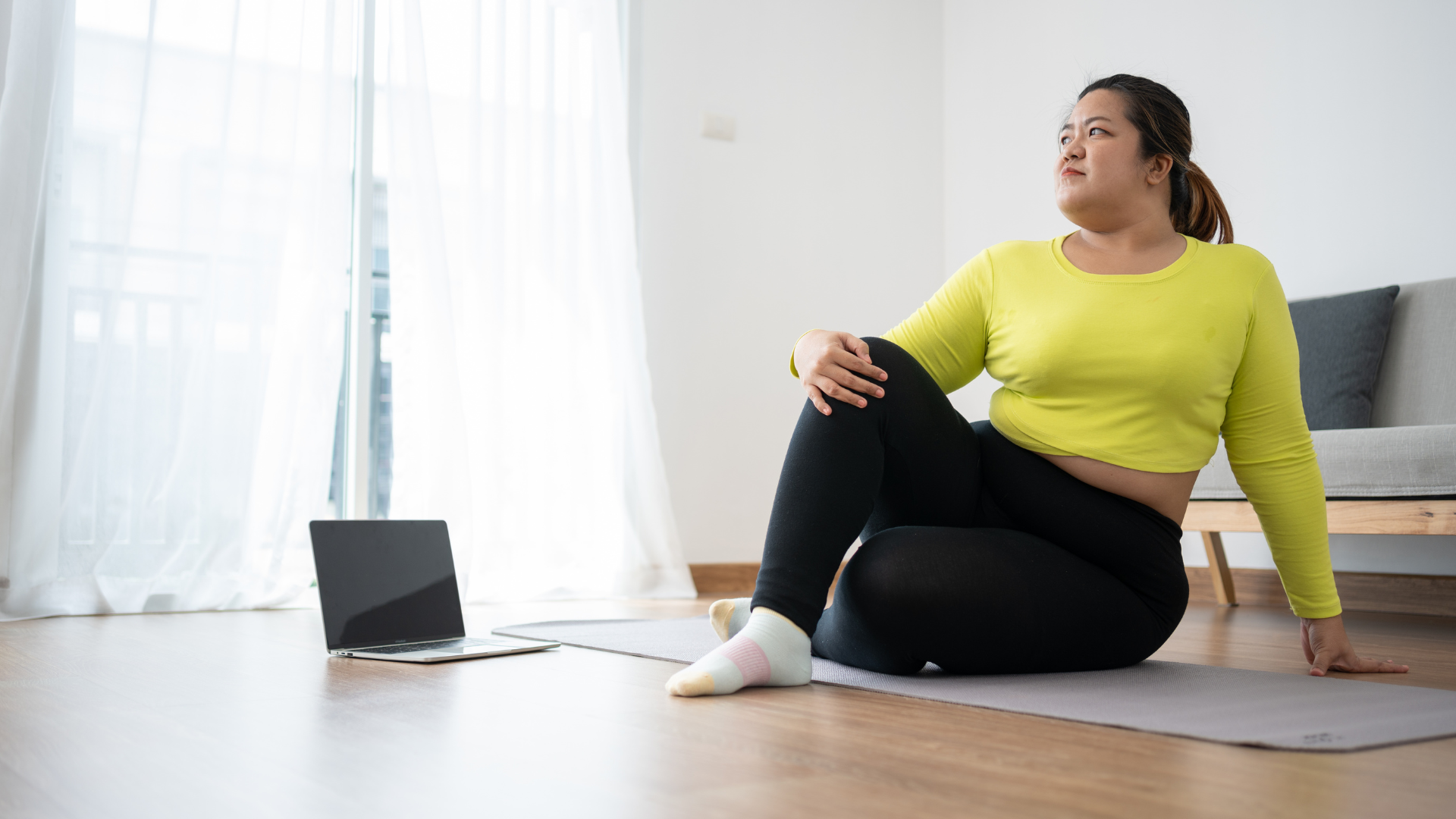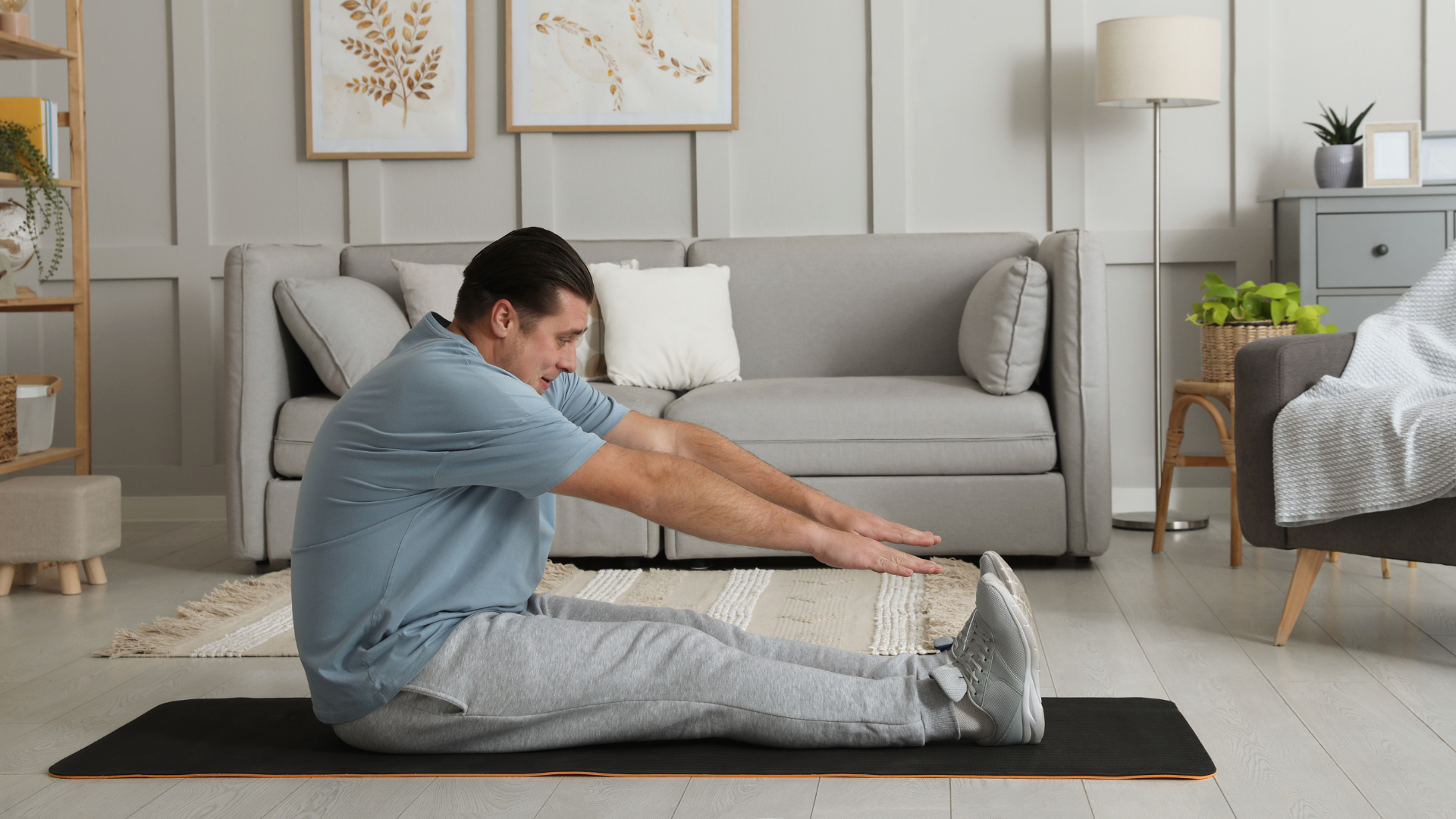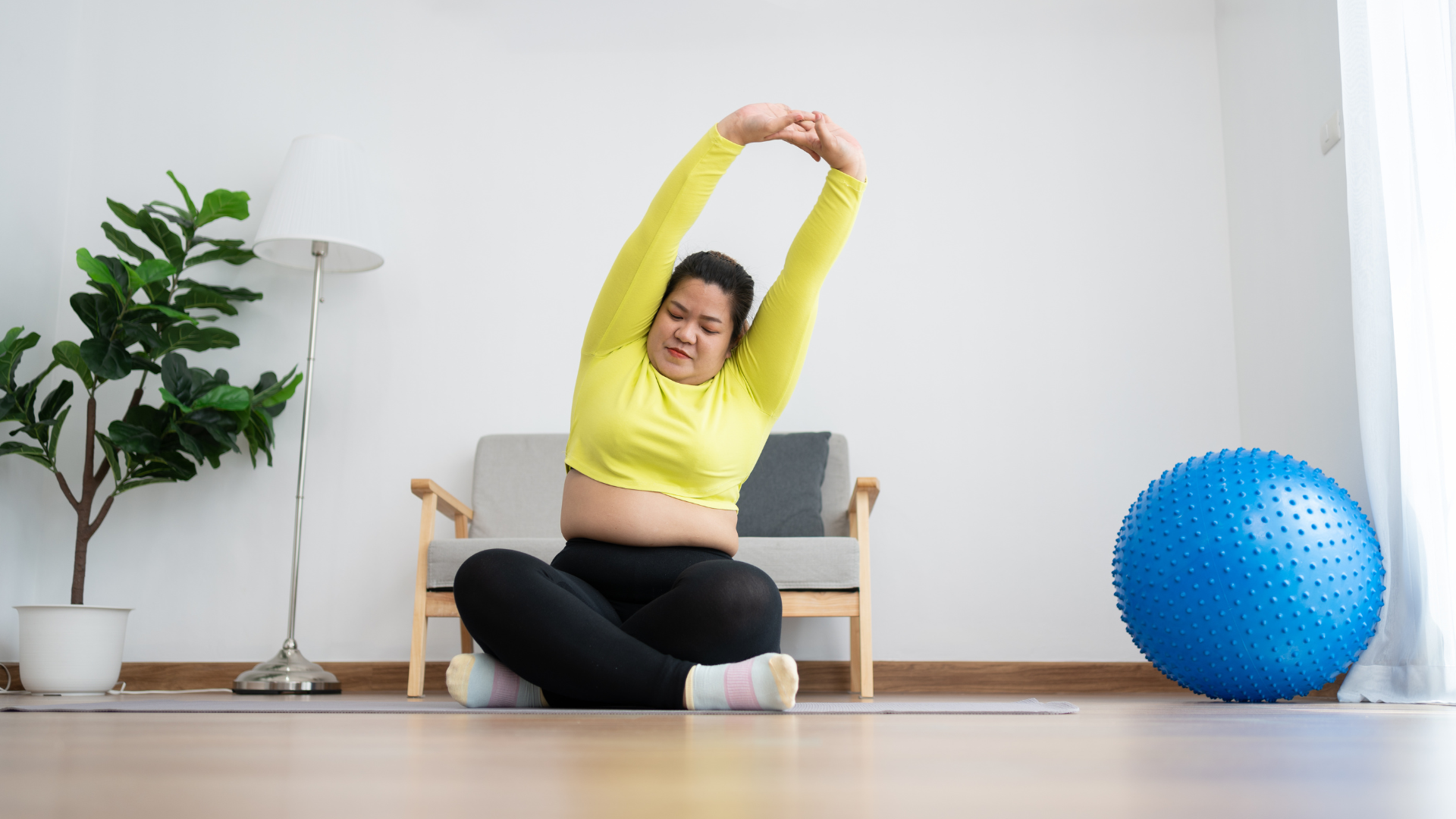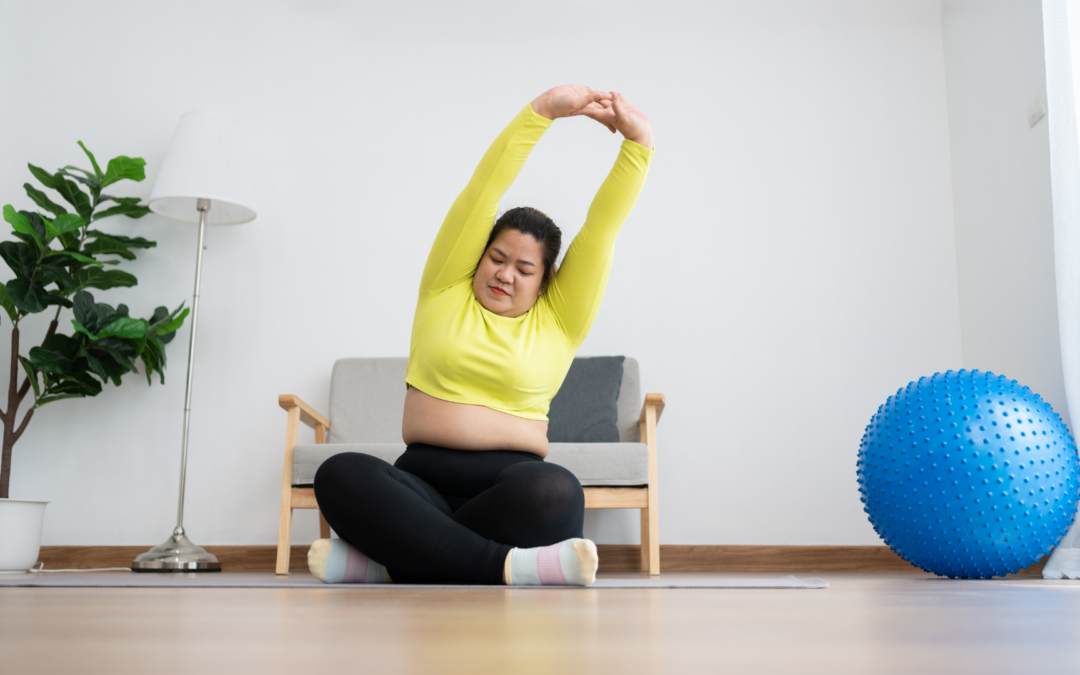Yoga Modifications for Plus-Size Practitioners
Yoga is a transformative practice that offers numerous physical, mental, and spiritual benefits. Certain poses may present challenges for plus-size practitioners due to body mechanics, flexibility, or strength. However, with appropriate modifications and guidance, yoga can be an inclusive and accessible practice for individuals of all body types.
Breath awareness and mindfulness are also critical components of yoga practice. Many plus-size individuals may feel discouraged by traditional yoga images that promote unrealistic body ideals.

However, yoga is not about appearance—it is about inner peace, self-care, and connection with the body. By incorporating modifications, practitioners can focus on their breath, relax into poses, and build confidence in their movement.
Online Yoga Classes for Weight Loss, known for its personalized approach, offers tailored modifications to accommodate plus-size practitioners, ensuring a safe and enriching experience.
Understanding the Needs of Plus-Size Practitioners
Understanding the needs of plus-size practitioners is essential for creating an inclusive and supportive yoga experience. Many plus-size individuals face unique physical and emotional challenges that should be acknowledged with sensitivity and care.
Physically, they may encounter difficulties with flexibility, joint strain, or balance, requiring pose modifications, props, and slower transitions to ensure comfort and safety. Instructors should be knowledgeable about adaptive techniques, such as using blocks, straps, or wider stances to accommodate different body types.
Beyond the physical aspect, emotional support is equally important. Many plus-size individuals struggle with body image concerns or fear judgment in fitness spaces. A welcoming and body-positive environment encourages confidence and participation. Using inclusive language and avoiding weight-related assumptions fosters a space where practitioners feel respected and empowered.
Additionally, plus-size practitioners may have varying fitness levels, so offering different intensity options allows them to progress at their own pace. The focus should be on overall well-being rather than weight loss, emphasizing strength, mobility, and mindfulness.
By addressing these needs with compassion and awareness, yoga instructors and studios can help plus-size individuals experience the full benefits of yoga, promoting self-acceptance, physical health, and inner peace.
Plus-size individuals may encounter specific challenges in yoga practice, including:
- Limited Flexibility: Certain poses may require a range of motion that is currently beyond reach.
- Balance Issues: Maintaining balance in standing or transitional poses can be challenging.
- Joint Stress: Excess weight can place additional stress on joints, making some poses uncomfortable.
- Body Proportions: Standard poses may not account for variations in body shape and size.
Recognizing these challenges is the first step toward creating a supportive yoga practice.
Shyambhai Yoga’s Approach to Modifications

Shyambhai Yoga emphasizes inclusivity and personalization in its teachings. The instructors are trained to offer modifications that cater to individual needs, ensuring that each practitioner can participate fully and safely.
Key Principles of Shyambhai Yoga for Plus-Size Practitioners:
- Use of Props: Incorporating props such as blocks, straps, and bolsters can provide support and enhance accessibility in various poses.
- Pose Adaptations: Modifying poses to accommodate body proportions and flexibility levels ensures comfort and effectiveness.
- Pacing: Encouraging a slower pace allows practitioners to move mindfully and maintain balance.
- Breath Awareness: Focusing on breath control aids in relaxation and deepens the connection between mind and body.
- Positive Language: Using supportive and affirming language fosters a positive self-image and encourages persistence.
Common Pose Modifications
Instructors play a vital role in making yoga accessible to plus-size individuals. Teachers should be knowledgeable about different body types and provide a welcoming, judgment-free environment.
Offering variations for poses, avoiding weight-related language, and encouraging self-compassion can help plus-size students feel comfortable and included. Representation also matters—when students see diverse body types in yoga classes, they are more likely to feel that they belong.
The healing Power of Yoga: Stories of Transformation will boost your mind. Here are some common yoga poses with modifications suitable for plus-size practitioners:
- Child’s Pose (Balasana):
- Modification: Widen the knees to create space for the torso, and use a bolster or folded blanket under the torso for added support.
- Downward-Facing Dog (Adho Mukha Svanasana):
- Modification: Practice the pose with hands on a wall or a chair to reduce strain on the wrists and hamstrings.
- Forward Fold (Uttanasana):
- Modification: Use blocks under the hands to bring the floor closer, and bend the knees slightly to ease tension in the hamstrings.
- Warrior I and II (Virabhadrasana I & II):
- Modification: Shorten the stance to maintain balance, and use a chair for support if needed.
- Pigeon Pose (Eka Pada Rajakapotasana):
- Modification: Perform a seated figure-four stretch or use props under the hip for support.
Creating a Supportive Environment
A welcoming and inclusive environment enhances the yoga experience for plus-size practitioners. Shyambhai Yoga fosters such an environment by:
- Offering Personalized Classes: Small class sizes or one-on-one sessions allow for individualized attention and tailored modifications.
- Encouraging Open Communication: Practitioners are invited to discuss their needs and concerns with instructors.
- Promoting Body Positivity: Celebrating the diversity of body shapes and sizes reinforces the message that yoga is for everyone.
Benefits of Yoga for Plus-Size Practitioners
Yoga offers numerous benefits for plus-size practitioners, promoting physical, mental, and emotional well-being. It enhances flexibility and mobility, helping to reduce stiffness and improve overall movement. Regular practice strengthens muscles and joints, providing better support for daily activities while reducing the risk of injury.
Additionally, yoga improves balance and coordination, which can enhance posture and reduce strain on the body. It also supports cardiovascular health and can aid in weight management when combined with a healthy lifestyle.
Gentle forms like Hatha or Restorative yoga are particularly beneficial for those easing into movement, while modifications in poses allow practitioners to adapt exercises to their comfort level.
Beyond physical benefits, yoga is a powerful tool for stress reduction. The focus on mindful breathing and meditation fosters relaxation, lowers anxiety, and promotes self-acceptance. It encourages a positive body image, helping individuals appreciate their bodies for their strength and resilience rather than just appearance.

Online yoga classes are often inclusive and supportive, fostering a sense of belonging. Whether practiced at home or in a class setting, yoga empowers plus-size practitioners to connect with their bodies, improve their health, and cultivate inner peace in a non-judgmental environment.
Engaging in a regular yoga practice offers numerous benefits, including:
- Improved Flexibility: Gentle stretching increases range of motion over time.
- Enhanced Strength: Weight-bearing poses build muscle strength.
- Stress Reduction: Breathwork and mindfulness promote relaxation and reduce anxiety.
- Better Balance: Practicing balance poses enhances stability.
- Increased Body Awareness: Mindful movement fosters a deeper connection with one’s body.
Conclusion
Yoga is a transformative practice that offers numerous benefits for people of all body sizes, including plus-size practitioners. However, to make yoga more accessible and enjoyable, modifications are essential. By adapting poses and using props, plus-size individuals can experience the full physical, mental, and emotional benefits of yoga without discomfort or frustration.
One of the key aspects of yoga modifications for plus-size practitioners is recognizing that everybody is different. Flexibility, mobility, and balance vary from person to person, and a one-size-fits-all approach does not work.
A 2022 study published in PLOS ONE found that participants who incorporated yoga into their weight loss regimen lost 3.5% of their body weight compared to those who only received nutritional education. The study suggests that yoga enhances mindfulness and stress management, contributing to sustained weight loss. Simple modifications, such as widening the stance in standing poses, using blocks for extra support, or practicing chair yoga, can make a significant difference in comfort and stability.
Another crucial element of yoga modifications is the use of props. Blocks, straps, bolsters, and blankets can enhance stability and ease tension in poses that might otherwise feel restrictive. For instance, using a block in forward folds can prevent strain on the lower back, while a strap can help with deepening stretches without overextending. These tools allow plus-size practitioners to fully engage in yoga without pushing their bodies beyond their limits.
Inquiry
If you have any questions, please feel free to reach out. We’ll be glad to help!

